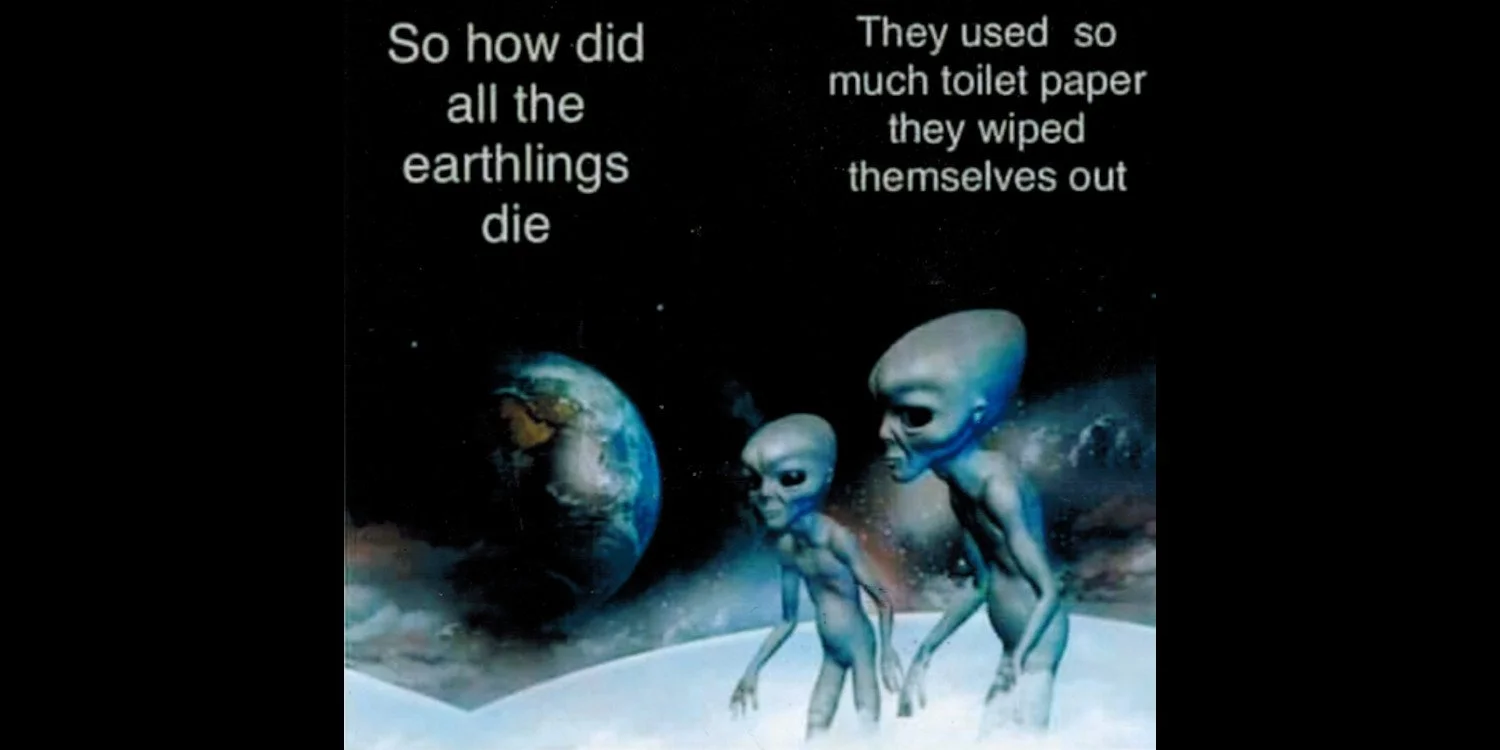Star Trek and the Search for Extraterrestrial Intelligence
In a secular world that embraces science alone, religion is irrelevant, a quaint anachronism that humanity must outgrow. Some corners of science tell another story.
A few years ago a popular media site described Beyond These Stone Walls as “the best under-appreciated Catholic blog.” I wasn’t sure what to make of that until my friend, Father George David Byers (at Arise! Let us be going!) said: “It’s better than being the worst appreciated one.” I guess it’s all in the eyes of the beholder. The rare acknowledgment came just after one of our equally rare science posts, “If E.T. Phones Home, Make Sure It's Collect.”
The question is always lurking below the surface of our collective consciousness with enormous implications for both science and faith. The Search for Extraterrestrial Intelligence (SETI) was once considered fringe science, but now it is center stage.
Being able to converse in both science and faith is especially urgent now. Our legacy of faith to be passed on to our next generations is a sacred mandate, but it teeters on the edge of a disastrous void that simply should not be. I wrote of this awhile back in “Fr Georges Lemaitre, the Priest Who Discovered the Big Bang.”
That post is important for our spiritual legacy. Younger generations are misled by a popular pretense that science and faith are incompatible and cannot be reconciled. In a media world that embraces science alone, religion is seen as an irrelevant and quaint anachronism that humanity must outgrow.
The dilemma begins with the most influential medium through which the last two generations have been exposed to both science and, sadly, faith. That medium is television. The Fall 2016 prime time TV season marked a special event that helped shape our sense that humanity is nothing special in the Universe. It was the 50th anniversary of the first episode of Star Trek. What started as a struggling, low budget TV show pitched by visionary writer, Gene Roddenberry, made its debut in September 1966.
Star Trek has had an oversized influence on the way we see our scientific future. In the tumultuous 1960s, it was filmed at lots 9 and 10 of Desilu Studios in Hollywood. With its meager budget allotted by skeptical executives at NBC, Lot 9 was the bridge and interior of the Starship Enterprise. Lot 10 was “the planet,” meaning any planet the crew happened upon that week. They just kept redesigning the latex aliens and rearranging the Styrofoam rocks.
From day one, NBC executives were determined to rid Star Trek of the one character they believed no Earth-bound TV watcher would ever accept: the Vulcan First Officer, Mr. Spock. Fifty years later, he is one of the most recognizable and revered characters in television history. Leonard Nimoy left this planet in 2015, but Spock lives long and prospers.
Unlike other campy sci-fi shows of the era (remember Lost in Space?), the real attention to Star Trek was what producers and writers called, and sometimes not affectionately, its “message” episodes. I wrote about a memorable one, “Bread and Circuses,” in my post, “Gene Roddenberry and Captain Kirk’s Star Trek Epiphany.” I hope you will bookmark that link and read it later. You won’t be disappointed.
Science Fiction Is Fiction, Not Science
That post describes an episode in which TV went where no network has ever gone before — at least not during the rebellious and chaotic 1960s. “Bread and Circuses” had the clearest message, a nod to Christian faith. The network tried to suppress it, and Gene L. Coon, Star Trek’ s senior writer, quit because of it.
Star Trek was nearly cancelled by NBC after that episode in its second season. It was saved only by an outcry from devoted fans. I was one of them. I was 13 years old, and Star Trek was my window to a universe beyond Earth.
The USS Enterprise explored what I and many of my generation came to believe was “the undiscovered country” — intelligent life and new civilizations spread throughout the galaxy just waiting to be encountered to put humanity in its inevitable place. Angels were out and aliens were in. Since the 1960s five million Americans claim to have been abducted by aliens.
In some ways, Star Trek was ahead of its time. It survived Hollywood for just three TV seasons, a total of 79 episodes. On January 9, 1969, it was cancelled. No one could have predicted then that the imaginations it sparked would never forget it. Its alien civilizations — the enlightened Vulcans, the warlike Klingons, the imperial Romulans — were here to stay.
A decade after cancellation, Star Trek was reborn as a feature film in 1979 with the same cast and crew. Star Trek: The Motion Picture tried to blend science and science fiction with a plot that sprang from an event of real science. In 1977, NASA launched Voyager I and II to survey the outer planets. In late 2012, Voyager I became the first human creation to exit our solar system to travel among the stars.
It was a milestone of scientific achievement. In the 1979 Star Trek film, the Enterprise encountered Voyager I 300 years in the future. Hijacked by an alien intelligence, it was heading to Earth with a mission to locate “The Creator.”
In the 1980s and 1990s, Star Trek evolved into four popular television sequels (My favorite was Star Trek: Deep Space Nine), another dozen feature films, and hundreds of books about past and future plots. The alien civilizations expanded from Vulcans, Klingons, and Romulans to include dozens of others ranging from the timid to the terrifying. The science fiction of Star Trek depicted a galaxy teeming with sentient life.
Science Tells Another Story
A half century of Star Trek left us culturally predisposed to two ideas, one born out of real science and one still trapped in the realm of science fiction. At the time Star Trek was first launched in 1966, there were only nine known planets in the Universe, and one, Pluto, was since demoted to a “dwarf planet.”
NASA’s Kepler Space telescope has brought one vision of Star Trek into reality. Science has long known that there are 200 billion stars in the Milky Way galaxy, and it is but one of billions of other galaxies, each hosting millions or billions of stars with planets in their orbits.
Most human minds cannot fathom the immensity of the universe, and, as the brilliant 20th Century astronomer, Dr. Vera Rubin discovered, the Universe is more immense than even science imagined. What we have been studying, she said, is just the five to ten percent of it that is luminous.
Recently, the Kepler Space Telescope — launched in 2009 — confirmed the existence of 219 newly discovered planets orbiting distant stars. They include ten rocky planets (as opposed to gaseous giants like Jupiter and Saturn) that exist in the so-called “Goldilocks” zone: close enough to their sun to have liquid water, moderate temperatures, and life.
This brings to 4,496 the number of “exoplanets” discovered and to 49 the number of potentially habitable “Earth-like” planets. The premise of Star Trek — that our galaxy has an abundance of habitable planets where life could form — is true.
By early 2017, the newest Kepler discovery was a planet known as Proxima B, an Earth-like planet about 30 percent larger in mass in orbit around Proxima Centauri, the star closest to our sun. Proxima B, being the closest planet ever found beyond our solar system, is a mere 4.2 light years away, or about 25 trillion miles. With NASA’s current technology, it would be a one-way journey of about 1,000 years. Most recently discovered Kepler “Earth-like” planets are from 50 to 500 light years away.
Whenever such new planets are discovered, science writers are depicted in the news media inferring that extraterrestrial life is a given, and its discovery is just a matter of time. Kepler program science writer Mario Perez was quoted in The Washington Post:
“The important thing for us is ‘Are we alone?’ Kepler today tells us indirectly that we are probably not alone.”
Life Science Tells Its Own Story
“Probably” just doesn’t cut it for science to hold that position. There are compelling scientific reasons to doubt it, and rather than repeat them all here, I laid them out in a Linkedin article entitled, “Yuri Milner’s $100 Million Search for Extraterrestrial Intelligence.”
The most amazing discovery in the half century of the SETI Project’s search for any technological signature of life anywhere but here has been its complete silence. It is now a growing and widely held belief in science that life like us may be unique in the cosmos, and life itself is rare and sacred. How would we ever explain Planned Parenthood to E.T.?
The Church teaches that “Scripture bears witness to faith in creation ‘out of nothing’” (Catechism of the Catholic Church, 297).
And as for the science of life on Earth, I’ll give the last word to Stacy Trasancos, Ph.D., author of Particles of Faith: A Catholic Guide to Navigating Science (Ave Maria Press). In a brilliant essay in National Catholic Register (“How Do Adam and Eve Fit with Evolution?” June 11-24, 2017) Ms. Trasancos wrote:
“A worldwide survey of human mitochondrial DNA using genetic molecular clocks has shown that all mitochondrial DNA stems from one woman, known as “Mitochondrial Eve,” who lived about 200,000 years ago in Africa.”
Editor’s Note: If you want to know more about the story of science and faith (and if you’re not an extraterrestrial) the science posts from Beyond These Stone Walls are being collected in one place: in our Library category Science and Faith.




